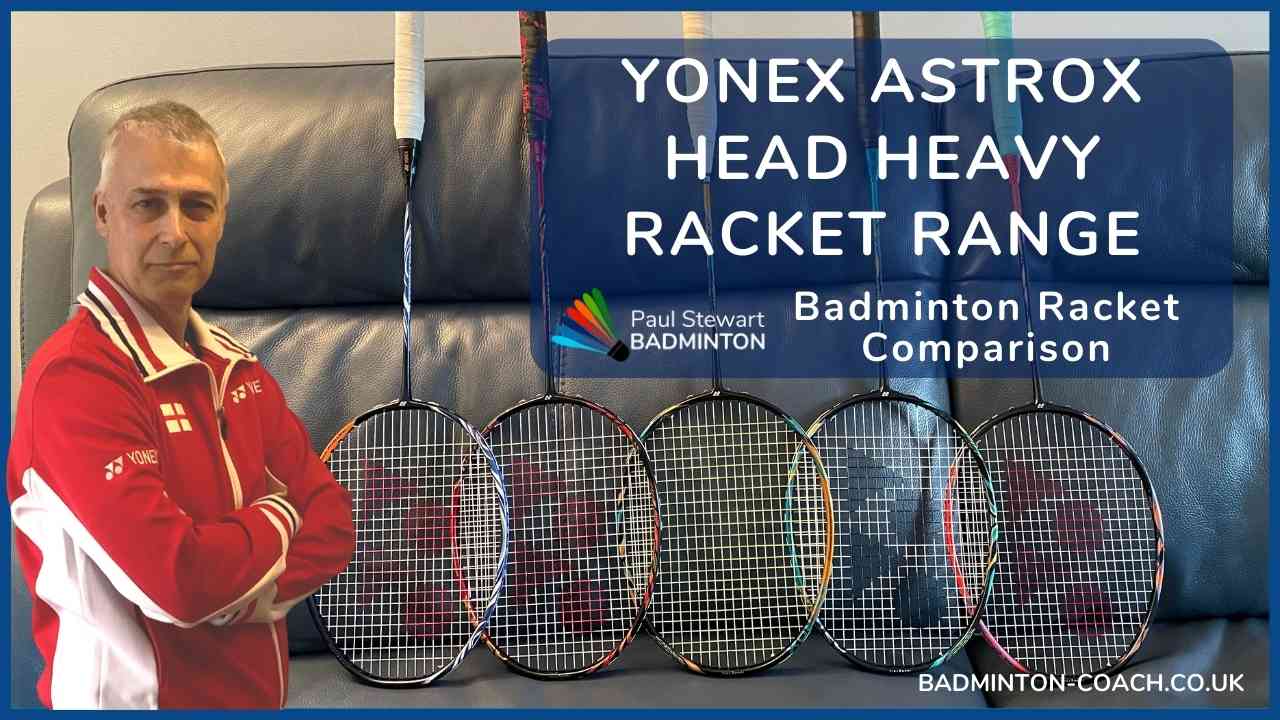A forum member recently wrote about a tournament they played in. They reached the final and won the first game. Sadly, their opponents then changed tactics which resulted in a complete turnaround in the match, with the opponents winning the second and third games comfortably.
As you can imagine, this pre-empted the question, “what do you do when it all goes wrong?” I promised the forum readers I’d write an article on this subject, so here it is…
Before getting in too deep, I’ll begin this article by saying that there are occasions when you are going to meet a superior player or pair. In circumstances like these, your mindset plays a huge role in deciding how the game is won and lost.
Just because an opponent may be superior in all departments of the game, it doesn’t mean they should win easily and on occasion, it doesn’t mean they will win at all. However, whenever you find yourself on court in a situation like this when you are clearly outclassed, there’s a huge amount to learn and absolutely no pressure on you.
So You’re Completely Outgunned.
In situations like this:
1) Work hard to keep the shuttle in court. Make your opponent play the winner rather than you hand them the point on a plate.
2) Be prepared to change everything to find something your opponent doesn’t like or respond well to. This means changing the pace, fast or slow, focus your attention down one side of the court or on one opponent moreso than the other and look for the gap. Attack or defend depending on yours and their preferences. If they like to attack, try to dominate the net and force them to lift.
3) Use the element of surprise to add some confusion into the game. This can be flick serving, flicking from the net, playing a lift when you could have played a safer shot. In other words make yourself a little unpredictable so that you can potentially unsettle your opponent.
4) Take chances. Throw a few high risk moves into the rally e.g. your opponent plays a very tight net shot and you try to kill it on the net. Very high risk but can be mentally off-putting for your opponent.
Some players would add in here a little gamesmanship. Personally, I don’t like these kind of badminton tactics e.g. not being ready for the serve. Players who use these tactics are verging on cheating and I don’t see any pleasure in this behaviour on court. Some may disagree, especially some pros who use these tactics frequently.
You’re Capable of Winning, But You’re Not Responding Well To A Change In Badminton Tactics
I began this article by explaining the scenario which prompted the article. So to recap, you won the first game, then your opponents changed tactics and now you’re losing point after point. Help!
1) First of all, understand what’s different. Have your opponents focused their attention on one player in a pair or in one particular area on court?
2) Stop and decide on one tactic to try and combat this change. It could be as easy as changing one shot early in a rally. Test this a number of times and see what the average response is. You cannot try it once and give up if your opponent responds well first time. It could have been a fluke or poorly executed shot by you.
3) In doubles, go back to the badminton basics. Remember what your strongest formation is and your opponent’s weakest formation. Question whether your opponents have moved you away from your strongest formation, and own up if they are pressuring you into mistakes. Remember, in doubles, you need to be honest. If you’ve been targeted, tell your partner you’re having a problem and then figure out ways to recover this situation.
4) If your opponents are finding ways to get into their strongest formation, figure out what they are doing. What shots are you playing that allows this to happen? Try something different or opposite to what you’re currently doing.
5) Discuss what’s happening around serve/return. Where are your opponents serving to and where do they stand to take the return? Again, change what you’re doing from the way you stand to the places you return the shuttle. If playing wide, go for body shot returns. Change the pace too. Where are you serving to? Has your opponent changed their base position and therefore this area isn’t as open anymore?
6) In doubles, question which of your opponents is really playing well and making more of the play and/or hitting the winners. Focus your attention on their partner and continue a concentrated attack strategy to see if this begins to break down their winning ways.
7) Another badminton tactic for doubles would be to decide which of your opponents is the slowest of the pair. Focus your attention on speeding up this player and disrupting their rhythm. This unsettling technique may be the one that upsets the pair.
8) If it’s getting all too fast and really tight around the net, then switch the play to the rear court, especially lifting deep into the corners. Sometimes a player or pair are very good at moving forward and pressurising. Getting the shuttle behind them consistently can be a great tactic. It forces the player back and causes sufficient doubt to make them hesitate moving forwards.
Summary
OK, you’ve got a huge number of ideas here to test. There are more tactics to add, although they’re really sub-sections of points already raised.
In addition to testing these, you must remain calm and focused. Allowing a temper to flare will not help you because you are not in the right state of mind to focus on the game plan.
These are the things to test to get back into the game. So, if you’ve won the first and are losing the second game heavily, then you’ve nothing to lose, give it a go and hopefully this will allow you to find the winning formula for the third game.
If the second game is tight, then you shouldn’t need most of these tips. In a situation like this, playing safe and keeping the rally going is more important. You need to remain focused and hope your opponent loses concentration and makes a mistake.
At the end of the day, badminton is a game where more points are won on mistakes than winners. Cut out silly mistakes like hitting out of the side, not getting the shuttle over the net, poor serve and you automatically improve your chances of winning the point.












wow paul,
i wish i could get hold of this a little bit earlier. faced a similar situation in a recent tournament. we were up against the number 5 ranked player of the country in semifinal. his partner wasn’t up to his standard though. we won the first game 15-8 (they were still using the old scoring point). in the next game we were 8-0 up and suddenly with all his skills, training and experience he somehow managed to turn things around in his favour by taking the game 15-12 in the second and in the third. what he did is find out the weakness in my partners net playing ability, force him a weak reply and then kill the rally off with a thunderous smash to me. we were helpless as we couldn’t found a way to take the game in our favour. i wish i could found ur article before the match or at least made my partner read it. excellent article and keep them coming.
Asif
Really sound advice, I think some of the teams I’ve played against this season must have read this.
I know it’s against the point a bit but it works if you’re the better pair and the opponents start to use these idea’s too.
I think the key is good communication with your partner and being aware of what your opponents are doing, however subtle.
My favourite games are the one’s when both sides are fairly matched and strategy decides who wins.
Simon
I agree. These games are great to play in when you’re trying to outplay and out-think your opponents.
Paul
“At the end of the day, badminton is a game where more points are won on mistakes than winners. Cut out silly mistakes like hitting out of the side, not getting the shuttle over the net, poor serve and you automatically improve your chances of winning the point.”
this point is key, in my local league they insist on playing first to 15, which basically means each game comes down to who makes the least mistakes, and means you need to play the % shots.
Sometimes concentrating on simple things like, making sure every serve is as good as it can be, or at the start of a game, dont go for winners until you’ve a feel for the game, the court and your opposition.
I’ve often found myself 3 or 4 – 0 down before I’ve even felt like I’ve got going, and this can be due to me going for shots that I perhapse should reserve for further into the match, once me and my partner are fully into the game.
Hmm this is something I stopped doing, cause when things go wrong when I try risky stuff, then I get really mad. But maybe it should be wise to try it anyway. When it all goes wrong, you have little to loose. Nice article, thanks a lot Paul !